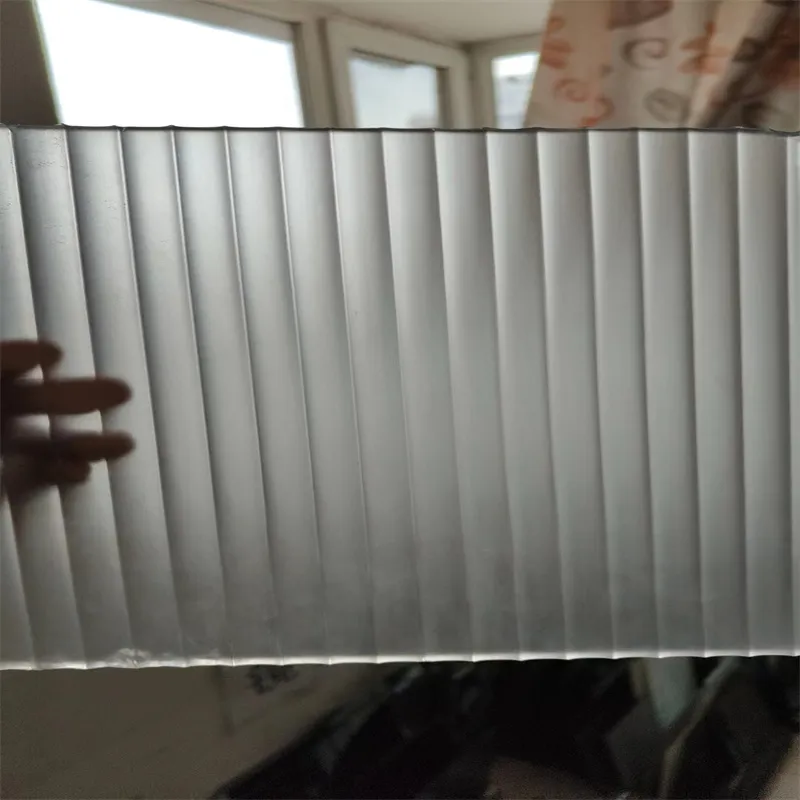Dec . 04, 2024 04:49 Back to list
Leading Producers of Flat Glass for various Industrial Applications
The Global Landscape of Plate Glass Manufacturers
Plate glass, known for its flatness and clarity, is a crucial material extensively used in various industries, including architecture, automotive, and interior design. As a significant segment of the glass industry, plate glass manufacturing encompasses a range of products, from large panes for commercial buildings to smaller sheets for windows and mirrors. This article explores the landscape of plate glass manufacturers, highlighting key players, production processes, and market trends.
Key Players in the Industry
The plate glass market is dominated by several key manufacturers globally. Notable companies include Saint-Gobain, Guardian Industries, and Nippon Sheet Glass, each with a substantial footprint in the industry. Saint-Gobain, headquartered in France, is one of the leading glass manufacturers, renowned for its innovations in glass technology and sustainable practices. Similarly, Guardian Industries, based in the United States, is recognized for producing high-quality glass products utilizing advanced manufacturing techniques.
In Asia, Nippon Sheet Glass from Japan and China’s Xinyi Glass stand out as major contributors to the global supply chain. Xinyi Glass, in particular, has expanded rapidly in recent years, capitalizing on the growing demand for glass products in construction and automotive applications. These leading manufacturers often engage in strategic partnerships and expansions to enhance their market presence and tap into emerging markets.
Production Processes
The production of plate glass involves several complex processes that ensure high-quality output. The most common method is the Float Glass Process, developed by Sir Alastair Pilkington in the 1950s. In this technique, molten glass is floated on top of molten tin, creating a flat surface as it cools. This method allows for the production of uniform thickness and clarity, making it ideal for high-demand applications.
Another notable process is the Laminated Glass Production, where two layers of glass are bonded with an interlayer, commonly made from polyvinyl butyral (PVB). This type of glass enhances safety by preventing shattering during impacts, making it popular in both construction and automotive sectors.
plate glass manufacturers

Advancements in technology have also led to innovations such as tempering and coating processes. Tempered glass products undergo rapid heating and cooling to increase their strength, while coatings can enhance energy efficiency by reflecting heat or UV rays. These technological enhancements play a significant role in meeting regulatory standards and consumer preferences for sustainability.
Market Trends and Challenges
The plate glass market is influenced by various trends, including sustainability, technological advancements, and changing consumer preferences. There is an increasing shift towards energy-efficient buildings, driving demand for insulated and low-emissivity glass. Manufacturers are adapting to these trends by developing products that meet energy efficiency certifications and environmental standards.
However, the industry is also faced with several challenges. The volatility of raw materials, fluctuating energy costs, and stringent environmental regulations can impact production costs. Moreover, the ongoing global supply chain disruptions have affected the availability of materials, prompting manufacturers to rethink their sourcing strategies.
Future Outlook
Looking ahead, the plate glass manufacturing industry is poised for growth, driven by urbanization and infrastructure development in emerging markets. As the demand for innovative glass solutions increases, manufacturers will need to invest in research and development to stay competitive. The integration of smart technologies, such as self-tinting and energy-generating glass, will likely play a critical role in shaping the future of plate glass products.
In summary, plate glass manufacturers hold a pivotal role in the global glass industry, with key players continuously evolving to meet market demands. As technology advances and sustainability becomes a priority, the industry will navigate challenges and embrace new opportunities, ensuring its relevance in a rapidly changing world.
-
Safety and Style with Premium Laminated Glass Solutions
NewsJun.24,2025
-
Reinvents Security with Premium Wired Glass
NewsJun.24,2025
-
Premium Float Glass Line for Modern Architecture
NewsJun.24,2025
-
Low Emissivity Glass for Energy-Efficient Architecture
NewsJun.24,2025
-
High-Performance Insulated Glass Solutions for Modern Architecture
NewsJun.24,2025
-
Elevates Interior Style with Premium Silver Mirror
NewsJun.24,2025
Related PRODUCTS














